The space telescope James Webb, the Hubble’s successor, will be launched soon and make observations at 13.8 billion light-years.
Information about the James Webb telescope
Will be launched by European Space Agency (ESA), in an Ariane 5 rocket, at the Kourou base, French Guiana.

It will make small circles at Lagrange 2 point, the most suitable place for a space telescope which operates on infrared.
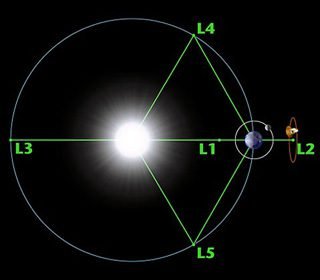
Click on the button below to know more about Lagrange points.
This telescope will detect photons (light particles) at 13.8 billion light years. It means that will observe the universe how it was 13.8 billion years ago. It cost 10 billion dollars and took 30 years to be designed and built.
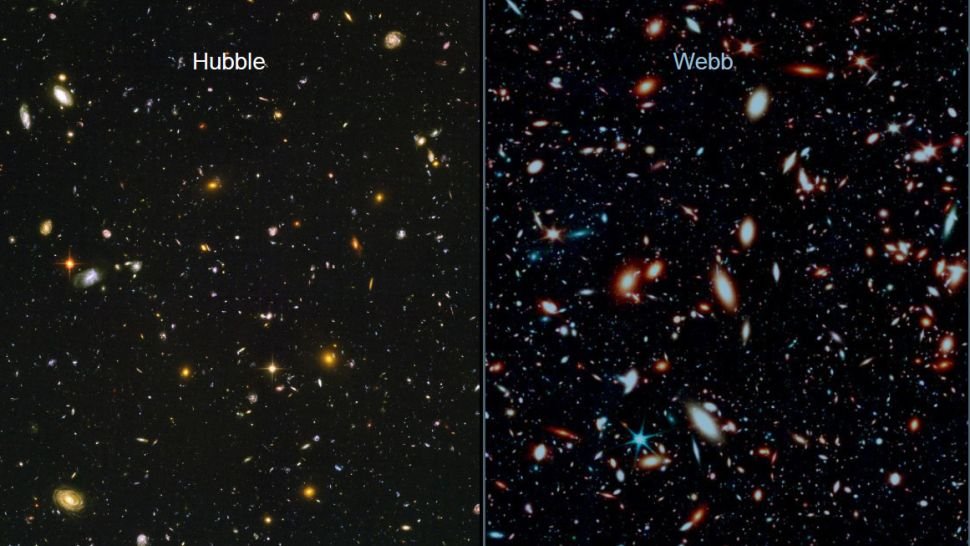
The infrared sensors
Source: Space.com
When scientists planned and designed the Hubble Space Telescope, the most groundbreaking astronomical observatory of its era, there were many things about the universe they didn’t know. One of these unknowns was that stars and galaxies existed already a few hundred million years after the Big Bang, Mark McCaughrean, senior advisor for science and exploration at the European Space Agency (ESA), told Space.com.
Hubble was built to detect visible and ultraviolet light. These early galaxies do emit visible light, but because of their distance, the wavelength of this light gets stretched into the infrared part of the electromagnetic spectrum by the so-called redshift.
The Doppler effect also affects light. When an object in space goes away from the observer, the emitted light has a bigger wavelength and tends to red in relation to the observer. While an object’s light that gets closer to observer tends to blue, because the wavelength gets smaller.
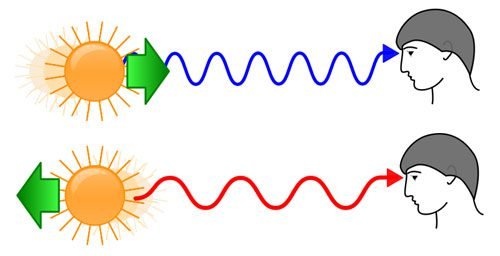

McCaughrean, then a PhD student at the University of Edinburgh in Scotland, was one of those scientists developing early infrared detectors, a technology that has now reached its culmination in four cutting-edge scientific instruments of the James Webb Space Telescope.
“The detectors on JWST have 2000 by 2000 pixels. And we have lots of them,” McCaughrean said. “We have many more infrared pixels [on JWST] than Hubble had optical pixels when it was launched.”
The James Webb Space Telescope’s giant mirror will feed the light of stars and galaxies into four cutting edge instruments designed not only to take images, but also to analyze the chemical composition of the near and distant universe. This is done with a technique known as spectroscopy, which looks at how matter in the universe absorbs light. As different chemical elements absorb light at different wavelengths, astronomers will be able to reconstruct what stars, nebulas, galaxies and planets within James Webb’s Space Telescope’s sight are made of.
The giant mirror
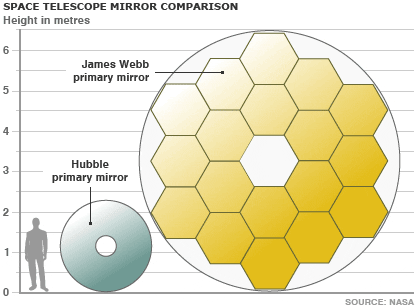
Why is the mirror golden and formed by 18 hexagons? The material is made of beryllium plated in gold, because the latter is the best for reflecting infrared light and the former is light.
At the backs of the 18 hexagonal mirror segments are small motors that delicately press onto the plates, shifting and bending them with extreme precision until they create one giant, perfectly smooth mirror.
The mirrors need to be adjustable, because it won’t be possible send astronauts to put lens to improve the telescope’s images, as was made with Hubble.
Thermal protection and cooling
To operate properly, the instruments must be at a temperature lower than 7 Kelvins (-266,15ºC/-447,07ºF). Be at L2 point isn’t enough to cool down to adequate temperature.
Source: Space.com
The largest piece of the spacecraft — and one without which the mission would be impossible — is its tennis court-sized deployable sunshield made of five layers of an aluminum-coated space blanket material called kapton.
The sunshield will unfurl in space before the telescope reaches its destination in one of the most nerve-wrecking parts of the spacecraft’s post-launch deployment sequence.
“The sunshield is by far the most mission-critical thing,” said McCaughrean. “If it doesn’t fully deploy, the telescope doesn’t work. We have obviously folded and unfolded it many times on the ground, but nothing like this has ever been flown in space before, and the lack of gravity simply changes things.”
The sunshield is not a simple parasol; a lot of clever engineering went into its design. The five layers of the ultralight kapton material are precisely spaced so that the heat absorbed by each layer is perfectly radiated away from the spacecraft through the gaps. While superthin and ultralight, the material is also incredibly sturdy, enough to survive bombardment by meteorites.
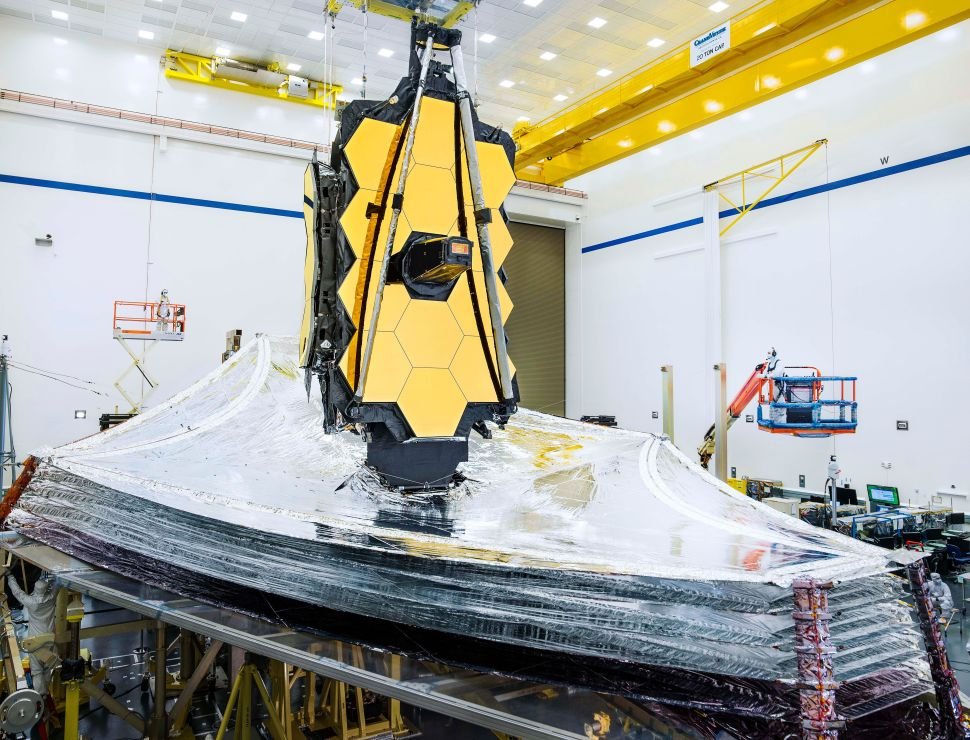
To obtain temperatures lower than 7 Kelvins, it’s also necessary to use an active low vibration thermoacoustic cooling. A phenomena that need to be explained in a dedicated post.
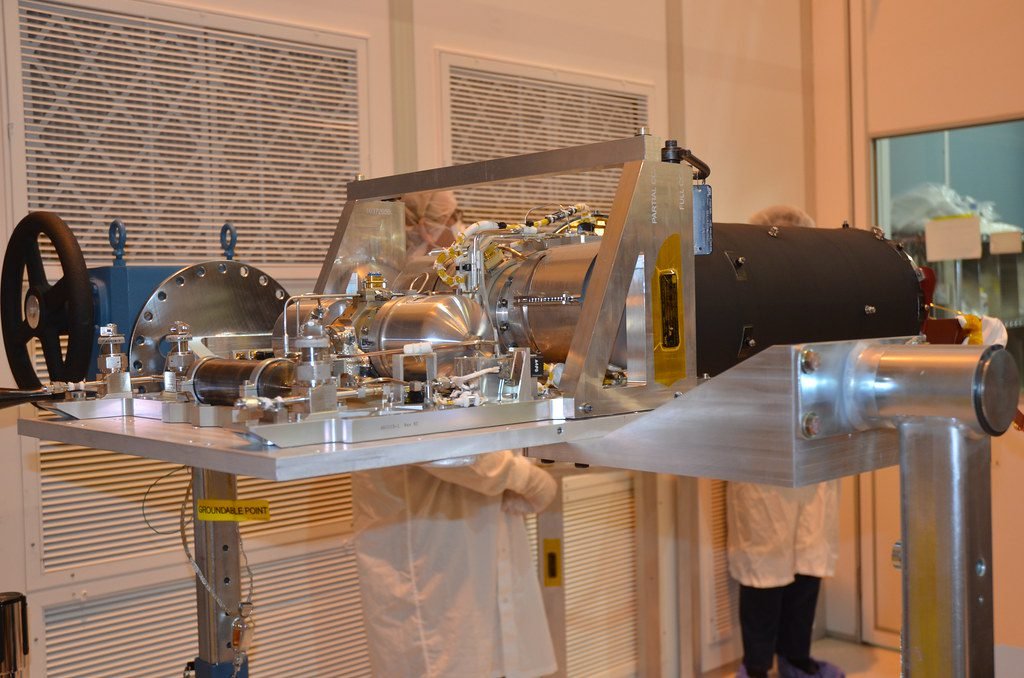
Other missions
In addition to observe the past of the universe, other tasks of James Webb will be:
- Discover new exoplanets, planets outside the Solar System.
- Study the evolution of universe’s chemical composition, through spectroscopy.
- Observe objects at Kuiper belt.
- See the born of stars in clusters.
You can watch the launch on this video.




Did you watch the launch?
The video is no longer available. It becomes private.